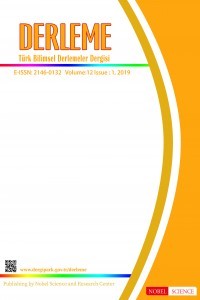Yabancı Otlarla Mücadelede Allelopatinin Kullanımı
Tarımın başlangıcından bu yana sorun oluşturan yabancı otlara karşı ülkemizde ve dünyada; kültürel, fiziksel, mekanik, biyolojik ve kimyasal olmak üzere değişik mücadele yöntemleri kullanılmaktadır. Tarımsal üretimde verimi büyük oranda düşüren yabancı otları belli sınır değerlerinin altında tutmak için kullanılan herbisit miktarının artmasıyla herbistlere dayanıklılık, çevre kirliliği, kalıntı ve biyolojik çeşitlilikte azalma gibi sorunlar ortaya çıkmıştır. Bu durumun dünya çapında sorun oluşturmasıyla birlikte alternatif mücadele yöntemleri geliştirilmeye ve sentetik herbistilerin yerine doğal bileşiklerin kullanılması arayışına gidilmiştir. Allelopati de bu yöntemlerden biridir. Allelopati, ortama kimyasal madde yaymak suretiyle bir bitkinin (mikroorganizmalar dahil) diğer bir bitki üzerinde olumlu veya olumsuz etki göstermesi olarak tanımlanmış, allelopatik etki gösteren kimyasal maddelere ise “Allellokimyasal” adı verilmiştir. Yabancı otlarla mücadelede allelopati; doğal malç, örtücü bitki, ekim nöbeti, karışık ekim, yeşil gübre, allelopatik bitkilerden çıkartılan toksik ekstraktlar, uçucu yağlar, doğal herbisitler ve allelopatik ürün çeşitlerinin kullanımı şeklinde olmaktadır. Yabancı otlarla mücadelede allelopati çalışmaları giderek daha fazla önem kazanmakta ve daha geniş araştırmalara ihtiyaç duyulmaktadır.
Use of Allelopathy for the Control of Weed
Since the beginning of the agriculture, several control methods against weeds that cause problems have been utilized in our country and the whole world including cultural, physical, mechanical, biological and chemical ones. As the amount of herbicides which is used for keeping the weeds reducing the crop yield during agricultural production at a certain threshold levels increases, the problems such as resistance to herbicides, environmental pollution, residue, reduction in biodiversity have arisen. Becoming this situation a worldwide problem, development of some alternative control methods and use of natural compounds instead of herbicides have been begun to find out. Allelopathy is also one of these methods. ‘Allelopathy’ has been defined as showing effect of one plant (including microorganisms) positively or negatively on another by emitting chemical substances to the environment and chemical substances having allelopathic effect are called ‘allelochemicals’. Allelopathy as weed control method is in the form of natural mulch, cover crops, crop rotation, mixed cropping, green manure, toxic extracts obtained from allelopathic plants, volatile oils, natural herbicides and use of allelopathic crop varieties. Allelopathy studies for weed control have gaining more importance and more comprehensive researches are needed
